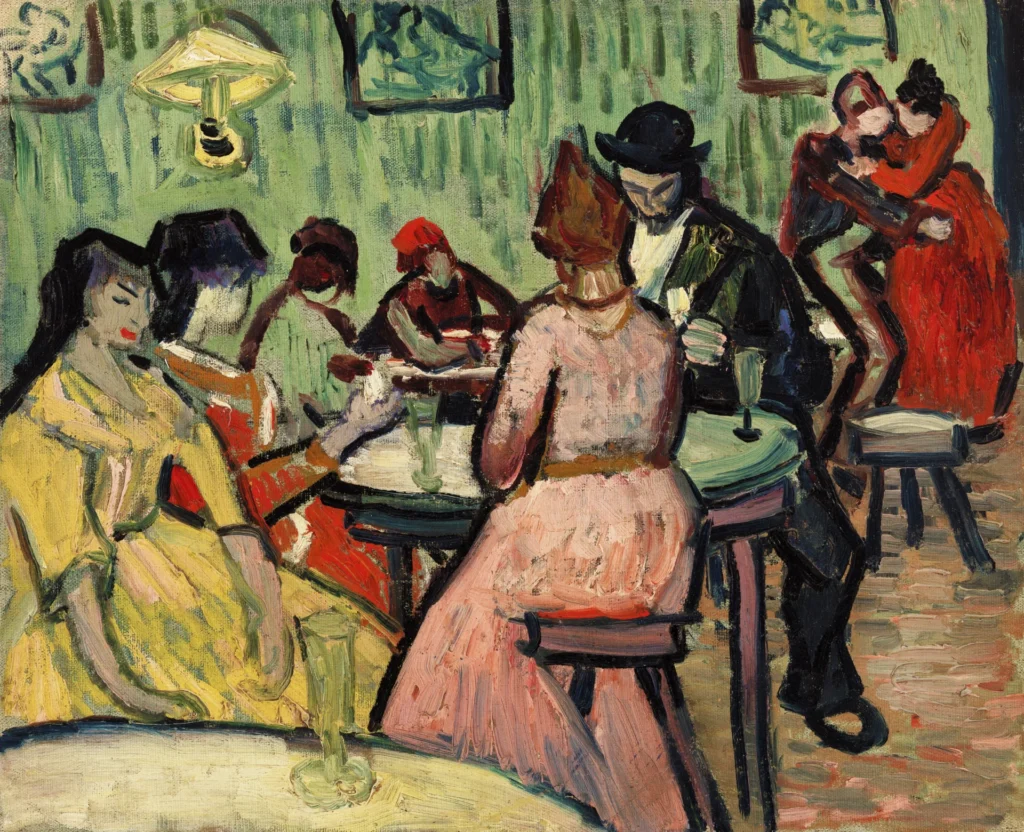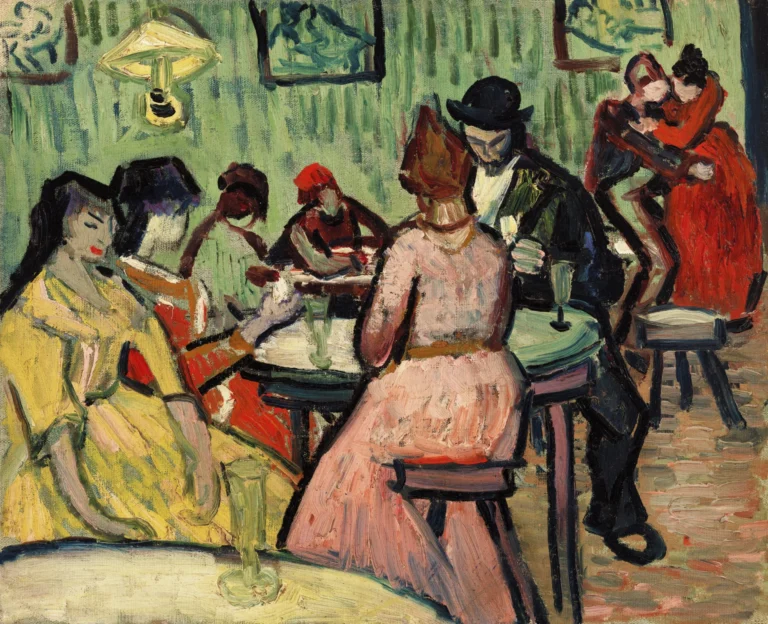The Brothel (Le Lupanar) (1888)
Vincent van Gogh’s The Brothel (Le Lupanar) is a striking representation of life in a brothel, painted during his significant Arles period in 1888. This particular work exhibits bold colors and expressive brushwork, hallmarks of Van Gogh’s post-impressionist style. Measuring 13 inches by 16 1/8 inches, it captures the intimate and complex atmosphere of the scene, reflecting the artist's exploration of human experience and emotion during his time in Arles, marked by collaboration and creative synergy with fellow artist Paul Gauguin.
Year 1888
About the Artwork
The creation of The Brothel (Le Lupanar) was deeply intertwined with Vincent van Gogh’s life and artistic development during his stay in Arles, France. At this time, he was experimenting with color and form while sharing ideas with Paul Gauguin, who influenced his work greatly. Van Gogh’s choice to depict the interior of a brothel can be seen as an exploration of intimacy and the human condition, reflecting both the beauty and complexity of life. This painting stands out as a significant example of Van Gogh's evolving style during one of the most productive phases of his career. Today, this artwork continues to intrigue viewers at the Barnes Foundation, where it is cherished as part of a vital collection that inspires discussions about art and society.
Did You Know
During the time of creating The Brothel, Van Gogh was engaged in close artistic dialogue with fellow painter Paul Gauguin, exploring new ideas and techniques that would influence his style and output.
The subject matter of a brothel reflects Van Gogh’s interest in capturing the raw essence of human life, demonstrating his willingness to explore themes of intimacy, loneliness, and the complexities of the human condition.
Today, ‘The Brothel (Le Lupanar)’ is part of the prestigious collection at the Barnes Foundation in Philadelphia, where it is appreciated for its artistic brilliance and historical significance.










